Appian, Adolphe
Lyon, Rhône, August 23, 1818 – Lyon, Rhône, April 29, 1898
Boat on the Shore, Mediterranean, 1882
Oil on canvas
Signed and dated lower right “Appian 1882”
H. 40.5 cm. / 69 cm.
Original Louis XIV-style carved and gilded wood frame, late 19th century.
Work cleaned and varnished by a professional restorer.
--
This painting depicts a coastal scene animated by the presence of a moored sailing boat, situated in the foreground at the centre of the composition. The vessel, rigged with a lateen sail, is shown grounded on the calm shore, its white maststanding out clearly against a sky filled with broad, swirling clouds. On the left, a rocky path climbs from the beach, where two tiny figures can be seen walking – discreet yet narratively significant.
The composition is structured around a diagonal line running from the lower left corner up toward the open sea. The horizon is placed relatively high, emphasising the vast expanse of sky, rendered with sweeping brushstrokes in broad circular motions. The boat, slightly offset, serves as the focal anchor of the scene, which evokes a southern coastal atmosphere where light, material and human presence coexist in harmony.
The brushwork is brisk and vibrant, with impasto in the rocks and more fluid handling in the sky. The palette is dominated by turquoise blues, warm browns, ochres and chalky whites. The atmospheric rendering, both delicate and expressive, reveals a refined control of light transitions.
Dated 1882, this work belongs to Appian’s mature period, when he was exploring Mediterranean coastlines with a renewed interest in colour and luminosity. It fully illustrates the evolution of his painting toward a sensitive naturalism rooted in the Barbizon tradition, yet enriched by a freer and more expressive formal approach.
--
Appian, Adolphe
Lyon, Rhône, August 23, 1818 – Lyon, Rhône, April 29, 1898
Born Jacques-Barthélemi Appian, Adolphe Appian was a French painter and printmaker associated with the Lyon School. He is the father of the painter Jean-LouisAppian (1862–1896).
Between 1833 and 1836, he studied drawing at the École des Beaux-Arts in Lyon under Jean-Michel Grobon (1770-1853) and Augustin-Alexandre Thierriat (1789-1870). He began his career as a designer in Lyon’s silk industry before devoting himself to landscape painting.
He made his debut at the Paris Salon in 1835 and exhibited at the Salon in Lyon in1847. From 1855 onwards, he took part regularly in both Salons. In 1852, he met Camille Corot (1796-1875) and Charles-François Daubigny (1817-1878), whose influence had a lasting impact on his style. Formerly divided between music and painting, he chose to commit fully to the latter, adopting the approach of the Barbizon School.
In 1862, he participated in the Universal Exhibition in London, and in 1867 he exhibited at the Paris Exposition, where Napoleon III acquired his painting Le Lac du Bourget. That same year, he shifted his palette from cool, sombre tones to warmer and more luminous colours. In 1868, he was awarded the gold medal at the Paris Salon, and in 1889, he exhibited at the Exposition Universelle in Paris.
Appian often stayed in the village of Rossillon (Ain), favoured by many painters, and spent numerous summers in Artemare, in the Bas-Bugey region, lodging at the Hôtel Buffet. He painted numerous views of the Valromey, a recurring subject in his work. A friend of the Barbizon painters, he also made several visits to Fontainebleau (Seine-et-Marne), where he continued to work en plein air.
From 1863, he also turned to printmaking, producing around ninety etchings printed by Auguste Delâtre (1822-1907), following two initial attempts in 1853 and 1854. In 1885, he exhibited in the “Charcoal Drawings” section of the first International Exhibition of Black and White (Pavillon de Flore, Louvre Palace), where he received a gold medal. His mastery of charcoal earned him the nickname “the Delacroix of charcoal”, and his etched work had a notable influence on the American artist Stephen Parrish (1846-1938).
He was made a Chevalier of the Légion d’honneur in July 1892. He died in Lyon in 1898, at his residence on rue des Trois-Artichauts. His works are now held in numerous public collections in France and abroad.







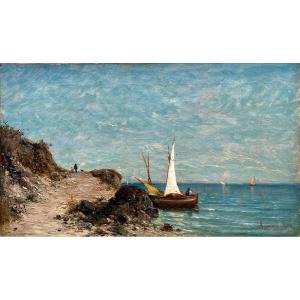





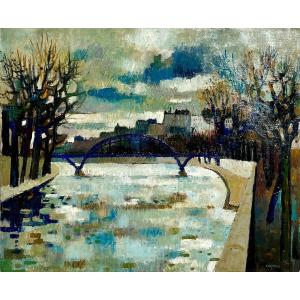

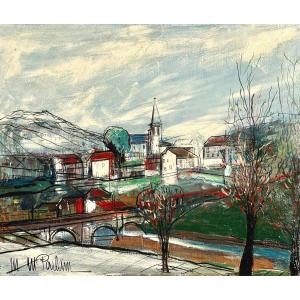
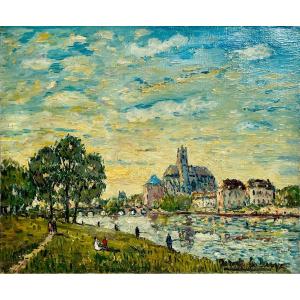







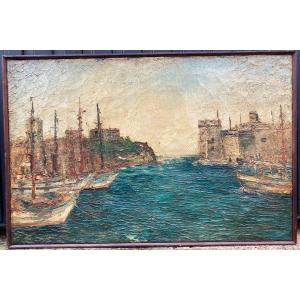



 Le Magazine de PROANTIC
Le Magazine de PROANTIC TRÉSORS Magazine
TRÉSORS Magazine Rivista Artiquariato
Rivista Artiquariato